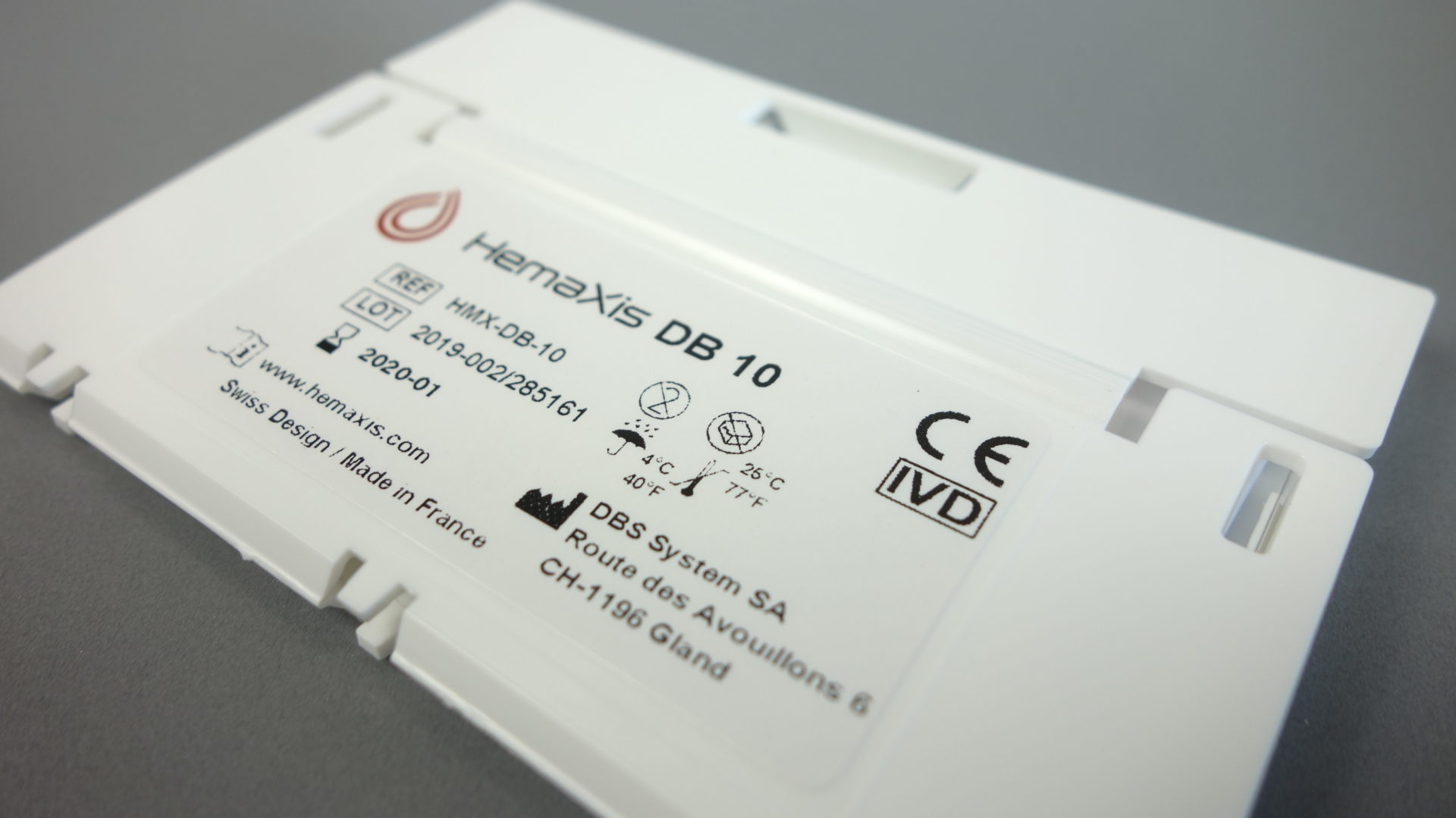HemaXis DB10 for
Simplifying grafted patients’ life
Grafted patients necessitate lifelong treatment with immunosuppressants in order to prevent graft rejection or toxicity. Because those drugs show extensive inter and intra-patient pharmacokinetic variability, frequent drug monitoring and individualized dose adjustments are required to ensure the patient’s exposure to the therapeutic drugs remains within their respective optimal therapeutic window.
Therapeutic drug monitoring (TDM) based on full area under the concentration-time curve (AUC) is considered the most accurate estimation of patient’s drug exposure. However, this approach is a real burden for patients, because it implies travelling back and forth to the clinic/hospital for repeated time-consuming and invasive sampling sessions. Lighter approaches such as trough concentration measurement and abbreviated AUC are generally preferred, but patients still require spending several hours at the clinic on a regular basis, which can dramatically worsen patients’ quality of life.
In order to alleviate grafted patients monitoring constraints, the group of Dr Dirk Jan Moes from the department of Clinical Pharmacy and Toxicology of Leiden University Medical Center has evaluated the use of HemaXis™ DB10 in replacement of conventional venipuncture for tacrolimus and mycophenolic acid dose adjustment and follow-up. The main objective is to make patients’ life easier by proposing a simpler and less invasive sampling approach, which would enable them to collect samples themselves at home and reduce the need for visits at the clinic.

Results summary
65 kidney transplant recipients were included into the study. A direct comparison of trough concentration and AUC0-24 of paired whole blood and DBS samples was performed for tacrolimus and mycophenolic acid.

Table from Zwart et al., Br J Clin Pharmacol, 2019. Reproduced with authors authorization.

The results observed in the study showed that TDM based on abbreviated AUC collected using HemaXis™ DB10 is comparable to conventional TDM based on whole blood sampling for the selected analytes. Those finding open the way to the evaluation of home-based TDM in stable outpatients for tacrolimus and mycophenolic acid.
Advantages of HemaXis DB10
The HemaXis DB10 collection device uses patented microfluidic technology to simplify all steps of blood analysis.
HemaXis DB10 enables the collection of a controlled volume of blood from a simple prick at the patient’s fingertip. The blood sample is then directly transferred onto a filter paper card, without the need for any other equipment (precision pipette, glass capillary,etc ). The collection can be done by anyone.
Once dried, the contamination risk by blood borne pathogenes is limited, and samples are stable. HemaXis DB10 devices can be shipped for analysis to the laboratory.
SIMPLIFIED COLLECTION
Blood samples can be collected quickly and easily at the patient’s fingertip
SIMPLIFIED ANALYSIS
Samples can be quickly analyzed in the lab using automated processes, or easily stored for later use
SIMPLIFIED LOGISTICS
Samples can be stored at room temperature and shipped by standard mail service to the lab
RELIABLE RESULTS
The standardization of sample collection using HemaXis™ DB10 guaranties quantitation accuracy and precision
Patient Follow-Up is Easier and More Efficient with HemaXis DB10
With HemaXis DB10, blood is easily collected at the fingertip, logistic costs are drastically reduced with the dried blood format and the ability to ship samples by normal mail.
HemaXis DB10 is the ideal device for an improved experience in the follow-up of patients while maintaining high scientific quality standards. It opens the way to home-based TDM, and is a very useful tool to improve grafted patients quality of life.
Start Using HemaXis DB10
Contact us for more information on how to integrate HemaXis DB10 into your workflow.
